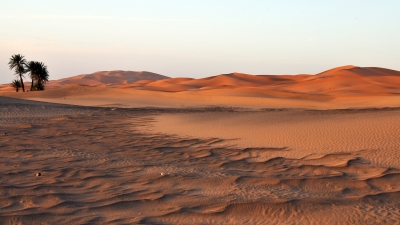
Deserts are arid ecosystems, receiving fewer than 25 cm of precipitation a year. They are hot dry and deserted. But the sand dunes aren’t just inert masses. They, in fact. “breathe” water vapor and are very much alive. Scientists have developed a super-sensitive probe that has recorded how water vapor from the surrounding air percolate between sand grains.
Researchers at Cornell University, New York, and University of Nantes, France, developed over a decade a new form of instrumentation called capacitance probes. to study the moisture content in sand dunes to better understand the process by which agricultural lands turn to desert. The probe uses multiple sensors to record everything from solid concentration to velocity to water content, all with unprecedented spatial resolution. It is so sensitive to moisture that it can pick up tiny films of water on a single grain of sand!
Conducting the research at Qatar, they combined data on wind speed and direction as well as ambient temperature and humidity. The study revealed just how porous sand is, with a tiny amount of air seeping through it.
When wind flows over the dune, it creates imbalances in the local pressure. This forces air to go into and out of the sand. “So, the sand is breathing, like an organism breathes,” the researchers note. This breathing could be the reason behind how microbes live deep in sand dunes, even when no liquid water is available. The researchers also found that at the surface of the dune, the probe measured less evaporation than scientists were predicting. This shows that the leaching of moisture from the sand dune to the atmosphere is a slow chemical process.
The team’s paper has been published in the Journal of Geophysical Research-Earth Surface. Probes that can sensitively measure moisture within sand could help experts find invisible signs of water, say, on Mars.
Picture Credit : Google




